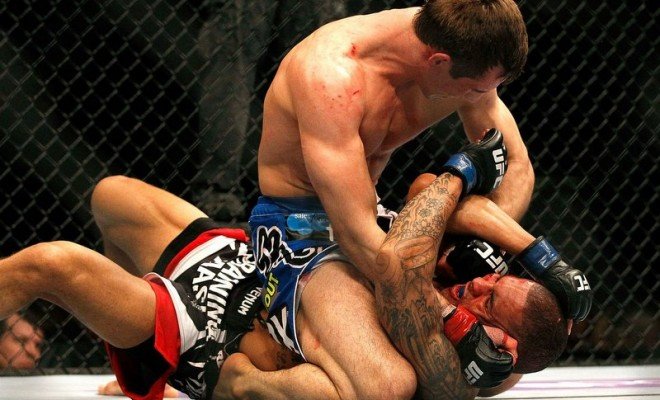
What is the ultimate martial art? And what are the best martial arts fighting techniques?
To find out, this guide takes you 350,000 miles around the world and checks out all the different martial arts.
We’ve put together the toughest conditioning, explored the most exotic locales, got some advice from incredible martial arts masters, and described the most insane fighting techniques from around the world
In this article we’re going to take a look at all the different martial arts, we’ll check out the brutal training, the chaos and carnage, and experience the wildest training locations and schools.
This article will reveal the most effective fighting techniques in all of martial arts. It is going hurt.
So let’s go, let’s get it on!
Different Martial Art Fighting Styles
There are hundreds of distinct fighting styles in the world. They are practiced in every nation and by every people. This article embarks on a mission to explore the history and techniques of these incredible martial arts.
Strikes
Whether they come from Karate, Savate, or Muay Thai, they are some of the most direct and basic techniques in the martial arts. They are also highly effective. Of all the different strikes which one proves to be the deadliest? Let’s find out.
Wing Chun punch
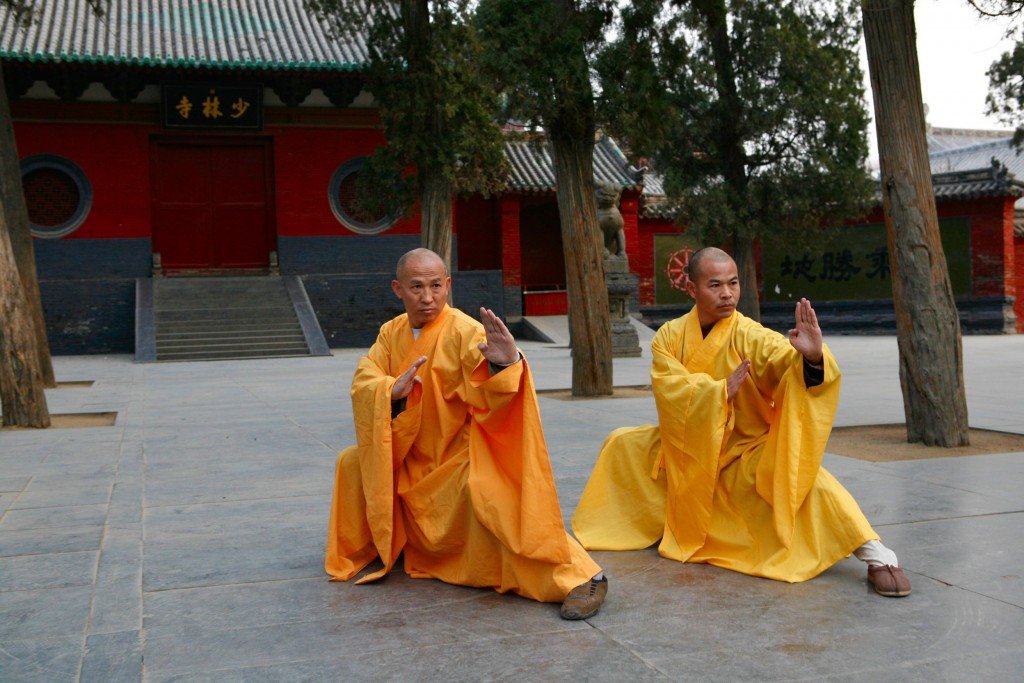
This is the science behind it. With your elbows tucked in behind your fists, you’re able to transfer an additional 80 pounds of force. Because the punch is delivered to your opponent’s core, along the central axis, the more directly the force is transmitted to his body. Even when a master puts on a blindfold to practice, these Wing Chun punches have unerring accuracy. This is really cool. Because it’s so fluid and fast,guys can be kicking butt blindfolded.
The Karate Form of Shuri-Te
With Shuri-te the end of the punch which works like a whip. Done correctly, it can deliver as much energy as a bowling ball dropped from the top of a house. More than enough to cause soft-tissue damage or break a rib.
The power you’re able to create is by simply rolling your fist. It’s really a good counterstrike. It’s gonna be really practical.
Wrist Bash

There’s more to striking than just punching. At Zakimi-Gusuku, a feudal castle in Okinawa, they teach a famous strike known as the wrist bash.
You have to feel the power of this hit. Just holding it, you might be able to hold 350-pound men in football, but you can barely hold the bat when a wrist comes through at Zakimi Gusuku. It comes through with such power and force, and just shatters things like a toothpick. Unbelievable.
The incredible power of this strike comes from the wide arc of the swing, which accelerates the wrist to speeds as high as 43 miles per hour. A single blow can land with the force of an ax handle. That’s the vital point.
The Elbow Strike

The wrist bash isn’t the most damaging strike to find in martial arts though. That honor goes to a move taught at a special forces training ground session in Thailand. The move? The elbow strike. What makes the elbow strike the deadliest of all is what it lands with, bone. Human bones can resist 40 times more stress than concrete. The elbow is almost pure bone.
Basically, the elbow works like the point of a knife. All of the force is magnified by being concentrated in a small, hard area. Capable of crushing even the hard bones of the skull. You can get a first hand look at the power of this strike in the infamous fighting pits of Bangkok. Kids literally catch an elbow right to the top of the head and blood starts pouring from their mouths. It’s disgusting.
The Toughest Martial Arts Training

Strikes are a vital part of the total package that goes into making a man into a true martial arts champion. But a strike is only as tough as the man throwing it. Around the world, fighters suffer through intense conditioning in almost every environment imaginable. So which training was the most intense? You are about to find out.
Muay Thai Jungle Training
In a jungle camp near the Myanmar border, you’ll find a legendary Muay Thai Chaiya master Preang. There, he puts fighters through a traditional training workout designed to prepare fighters for the rigors of a Muay Thai fight. It isn’t easy.
You feel like a piece of meat at this camp. You’re beaten, and prodded, and bitten by every bug out here. The environment, as aesthetically pleasing as it is, it is not fun to train here.
T’Nay Temple
In nearby Cambodia, just getting to the training ground is difficult. If you do make it to the 800-year-old T’Nay temple, you’ll found some brutal conditioning awaiting you.
This kind of natural training really forms the Khmer warrior. You have to be super tough. When you use things in the environment like trees, coconuts, even clay pots, you can get cut, it really toughens you up.
Pankratian

From the forests of Russia to the swamps of Virginia. From the deserts of Israel to the gyms of Las Vegas. There is plenty of pain outside the jungles. Like in the mountaintop training you can experience while learning the ancient Greek fighting style of pankratian. The Greeks invent philosophy, diplomacy, theater, and a 2000-year-old workout routine. You’ll be more sore with this one than you can ever be working out in the gym. You’ll be sore in places you didn’t know could be sore.
Kali
The most intense conditioning exercise of all to tackle if found while studying an ancient form of Escrina called Kali. The training mat is a rice paddy! You have to get in the rice paddy to train! It’s really warm. You sink down about a foot and a half. You can see where Kali came from: a hundred years ago, chasing your enemy through a rice paddy, then smashing his head in with a stick. It’s a direct relation to Escrima.
This one is all about footwork. If your footwork is good when you’re in eight inches of mud, you can master some awesome footwork when you’re on land. The fanciest footwork of all comes from some of the training out here. Imagine practicing wrestling moves on a 1,600-pound water buffalo. One stomp or stab from a water buffalo, and that could be the end of you.
The Best Martial Arts Takedowns
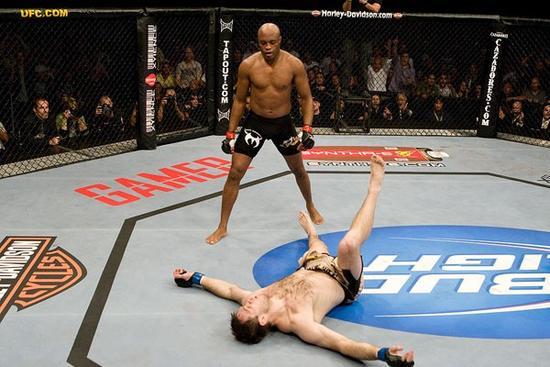
When you explore different martial arts you find that fights don’t often end standing up. Being able to get your opponent to the ground is key in most martial arts. These techniques have been used by everyone. From ancient Greek warriors, to the samurai, to the US Marines, to MMA legend Randy Couture.
They’re called takedowns. We’re gonna reveal which one is most effective of all the martial arts; using gravity, leverage, momentum, your opponent’s body weight, and your own brute strength. These throws will deliver more impact force than just about any other move in the martial arts.
Scissors-takedown
Take the scissor-takedown you can learn from Sambo.
Your opponent’s using his whole body weight against your legs and your chest. Your hips are the fulcrum point of the lever. You go down hard and fast. It’s like a piece of paper between two blades of a scissor. Instead of slicing through paper, you’re cutting through your opponent’s center of gravity.
Uchi Mata
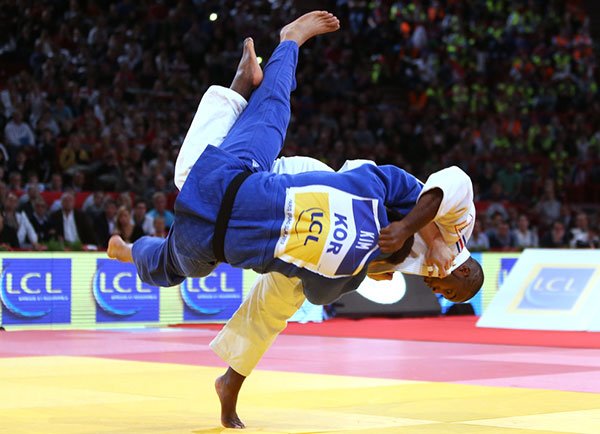
You’ll find several hard, fast takedowns in the strict world of judo.
Uchi mata is one of the most difficult techniques in judo. You want to learn that? Performed correctly, the uchi mata combines the power of the hips with the leverage of the throw, and the acceleration of gravity. To deliver up to 5,000 pounds of force. If it weren’t for the mat, this move could cause serious injury, or even paralysis. Then there were the sweeps.
Sanda
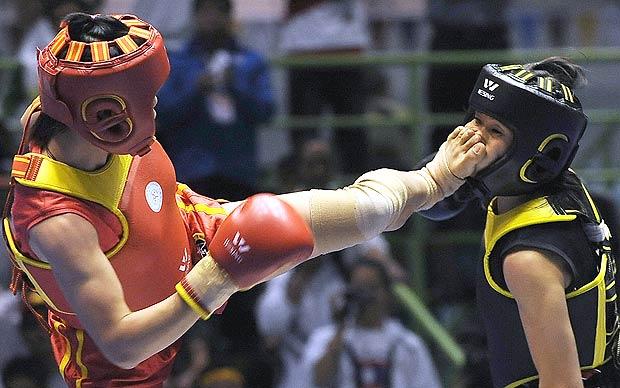
Or try this sandamu move practiced in China. With your opponent out of his center-of-balance, it takes less than 80 pounds of sideways force at the heel to bring down a 300-pound opponent. Sandra is a lot different compared to an actual kickboxing match or boxing match. Sanda is really violent. A lot of the kung fu elements learned really play into this. No matter how you take your opponent down, it always hurts.
Double-leg takedown
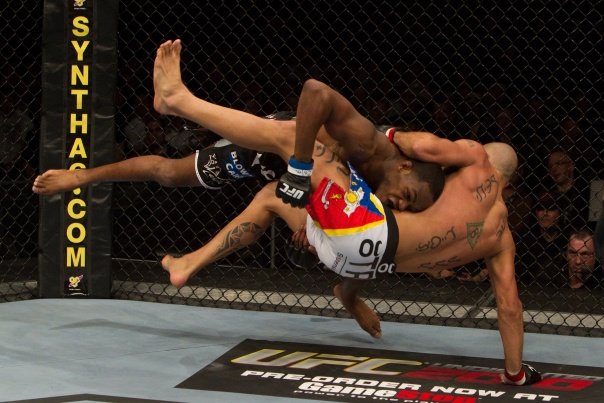
The most devastating takedown doesn’t need your opponent’s kick to kick it off. Instead, it is as basic as high school football and as deadly as Spartan warfare. It comes from the ancient Greek martial art of Pankratia, and is called the Arpog Padeion, otherwise known as the double-leg takedown.
The key to the double leg is using the strength of your legs and hips to lift your opponent high. The higher he goes, the faster he’ll hit the ground. It’s not just your force working against him, his acceleration due to gravity means his head can hit the ground with a 3,500-pound impact. On a hard surface like concrete, this is more than enough to cause a serious brain injury. Punch in. Double leg up.
This double leg takedown is great. Once you get a hold of his legs, drive up and through. Use a lot of the same power you use on a football field, when you’re driving through a block you get ’em up and slam ’em down. You’ll discover the double showing up all over the world. From a wrestling match in a rural Cambodian village to the gym of a mma pro.
Weapons Based Martial Art Training Techniques
When most of us think of martial arts, we think of kicks and punches. However, many of the arts originated not in the ring, but on the battlefield. To really master martial arts you also have to learn how to use real weapons, and discover which weapons technique is the deadliest.
Kabuto
How about the ancient Okinawan art of Kabuto? Like karate, the traditional-weapons-based Kabuto was used to fight the samurai in 1609. By training with the weapon, you actually are polishing your base techniques, which is going to help any kind of fighting that you do.
Start by training with a bo staff. If you can hit one of these, you should be able to hit an opening in your opponent’s defense.
Different Weapons Based Training
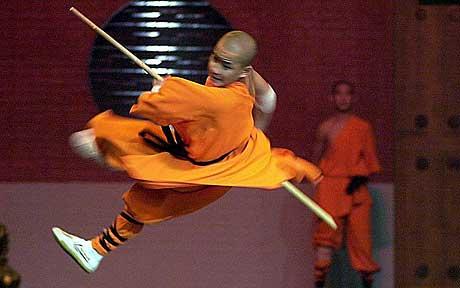
In the ancient Thai capitol of Ayutthaya, you can still see how Muay Thai, weapons-based and hand to hand combat work together. Or how about training with weapon-wielding jiu jutsu masters and the monks of a Shaolin temple? Maybe you should try some French cane fighting in your training?
It’s not just older arts that use weapons. Weapons training is an integral part of Krav Maga as well. They train with knives and these aren’t rubber knives, these aren’t plastic knives. They train with thing as sharp as a knife as it comes.
Or how about at a Marine Corps martial arts facility where they train marines in how an m-16 can be deadly without bullets, in a move called the horizontal butt stroke. The butt stroke delivers up to 550 pounds of force, twice that of the elbow strike. Enough to drive a 16-penny nail through nearly 2 inches of pressure-treated wood.
Escrima
Perhaps the most impressive weapons-based techniques come when you explore Cebu City, in the Philippines. The move comes from Escrima, and it is a killer. This strike is driven by the rotation of the torso, and it can accelerate the business end of a fighting stick to more than 25 miles per hour. It’s the same injury-producing force as being hit in the temple by a hammer.
Pain…Lots of Pain
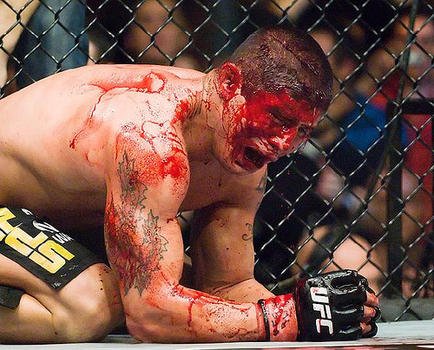
This quest to explore all the martial arts will reveal all the most powerful strikes, sweeps, takedowns, and weapon attacks in the martial arts. The road to martial arts’ nirvana can be a long, bumpy, and often unique ride, and it’s going to get painful. Because, awaiting you at the end of any martial arts training session isn’t a luxury hotel or a day on the beach: it is pain.
The Best Ways to Inflict Pain – Kicks
Martial arts teach you that one of the best ways to inflict pain is with the legs, because the legs have as much as four times the mass and twice the length of the arms. They can deliver blows of incredible power. What was the most devastating kick of all? Let’s find out.
Power Angle Kick
In Thailand, you can learn the crippling force of the Muay Thai power angle kick. If you’re doing this full force…Drop it down, bam…Drop it down, bam…Drop it down, bam…Five or 10 of those and the guy’s not going to be able to walk. He’s gonna be thinking about his leg.
The kick’s power comes from the torque generated by the rotation of the hips. The longer the leg and quicker the rotation, the faster the kick. Muay Thai teaches that kicks don’t count unless you damage the other person. Damage the other person, that’s not something most people wanna sign up for.
Kung Fu Kicks
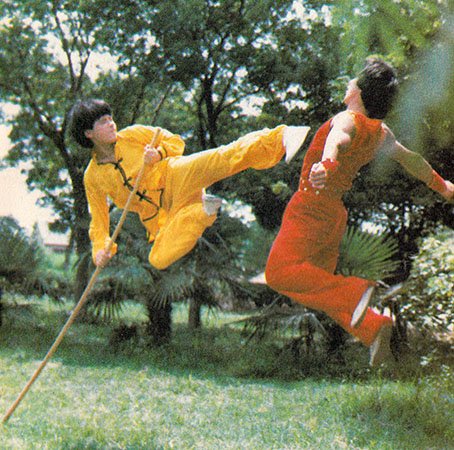
Of all the kicks Jason and Bill you can find in the world, perhaps the most devastating is the one taken from kickboxing, for example a kungfu kick practiced by someone like legend Kung Lee.
Like the wrecking ball at the end of a demolition crane, the kick’s power is generated by the rotation of the body. In conjunction with the snap of the knee, the foot achieves a velocity of nearly 30 miles per hour. When the heel connects with the solar plexus, it transfers 1,400 pounds of force. Enough to damage internal organs, and fracture multiple ribs.
Essential Martial Arts Locks
With strikes, takedowns, weapons techniques, and kicks, you should be a pretty mean martial arts fighter by now. Try Scouring dusty villages, back-alley gyms, ancient castles, and stunning monuments for the best martial arts moves. You’ll find that some of the most effective aren’t strikes, kicks, or takedowns at all. They are locks. So what is the most effective locks?
A Savage Shoulder Lock
In Greece, a descendant of Spartan warriors learn a savage shoulder lock. The greater the torque on the shoulder, the greater the pain inflicted. Exceeding the joint’s normal range of motion causes more than just pain. The soft tissue, muscles, and bone can all be seriously damaged by this pressure.
Sambo and Silat
In Sambo, you learn a leg lock that uses tremendous leverage to injure two of the strongest bones in the body. The tibia and the fibula. Get underneath, pull down, keel over.
Now how about the wicked sinking python of Silat. By rotating your opponent’s wrist to the maximum extent of its range of motion, the bones of the wrist lock against the bones of the forearm. This causes intense pain and gives you control of his arm. It’s not just a block, it’s a block with a lock, an elbow to the face, a knee to the groin, and then your wrist gets broken. Everything is quick, everything is violent, that’s Silat.
Kali
In the Philippines, there’s a martial art that is the ancient forbearer of Escrima, called Kali. The technique is deadly.The moment your opponent gives his hand, you are in complete control. You can break an arm so easily. This lock could easily deliver enough force to leave your opponent paralyzed, or even dead.
Judo Arm Bar
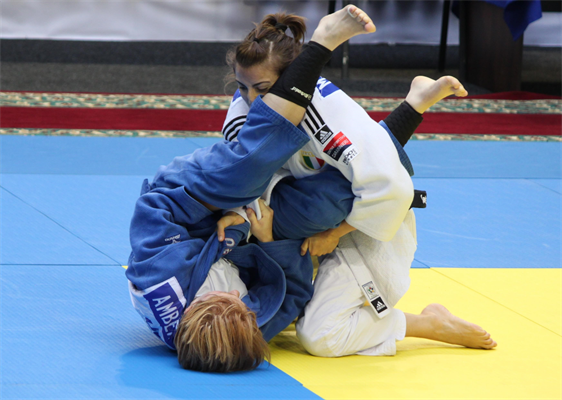
But the most effective lock is the crisp, elegant brutality of the Judo arm bar, one of the most fundamental locks in martial arts.
The arm bar is a perfect example of the science of leverage. By bending the elbow across the fulcrum of your hips, you’re subjecting the weak joint to the leverage of two strong forces. The pull of your thighs on his shoulder and your hands on his wrist. If he’s 70 kilos, and you’re 125 kilos it doesn’t really matter when it comes down to an arm bar. It’s all about your joint, whether you want your arm the way it’s supposed to be for the rest of your life. You got no choice but to tap.
The Best Martial Arts Chokes

Martial arts training forces you to confront your limits, both physically and mentally. Becoming a martial arts fighters isn’t just about learning how to fight, it’s about learning how to suffer. One thing you learn is that there are lots of ways to win a fight. Strikes, takedowns, kicks, and joint locks. Each one can cause serious damage, even in practice. But of all the moves in martial arts, the most frightening has to be the ones designed to kill, the chokes. So which choke was the most effective?
Blood Chokes
At first you can start with breath chokes that close off the airway. However, in the Philippines, you can discover a blood choke that closes off the arteries that carry blood to the brain.
Your opponent’s hand goes across your Adam’s apple, and it’s cutting off your carotid arteries. You feel like you are about to go out, so you have to tap.
Because blood chokes work much faster than breath chokes, sometimes in less than five seconds, they are preferred by most fighters. For example, at the elite judo gakuska boarding school in Japan, the guys are taught how to secure a choke, and win a match. This choke pulls the collar of the gi across the neck, and cuts off blood to the brain.
The Most Lethal Choke – The Rear Naked Choke

For sheer killing power, the most lethal choke is probably the rear naked choke. It’s a move used by the marine presidential helicopter squadron to take out an assailant quickly and silently.
Located on either side of the trachea, the carotid arteries are the only way to get blood to the brain. It can take less pressure than squeezing an orange to stop the flow of blood. With no blood flow, the brain shuts down almost instantly. Fight over. Keep holding it, and the assailant will soon be brain-dead.
One of the great things about this choke is even when you’re drilling it, just having that little pressure there, you start to get light-headed. Even if he’s not putting 20% pressure, it still makes you get light-headed.
Martial Arts Pain Conditioning Methods
Even the nastiest chokes in the world are only as lethal as the fighter using them. When you train in martial arts you’ll quickly discover that an arsenal of deadly moves is only half the skill set you must possess. You have to know how to dish it out and how to take it. But which pain-conditioning method is the toughest?
Iron Body Training
On the island of Okinawa, they teach something called iron body training. The conditioning is designed to harden a fighter’s body with a barrage of constant strikes and punches. It’s very difficult to stand there and let a man hit you and not hit back. There’s nothing pulled with iron body training. Every punch comes hard, and comes quick. You’re just gonna take a beating. Wanna know the next stage in this training? You have to break a board with your bare fingers.
Torture Tests
Pain-inducing techniques aren’t unique to Karate. The torture test traces its origins to the Soviet Military. During the cold war, the Red Army soldiers were conditioned to have extremely high thresholds for pain. It’s a warm up of non stop pain in the freezing cold. You won’t know what’s worse, getting choked or getting crank time with these bad-asses because the Russians are nuts.
Crazy Training From Around the World
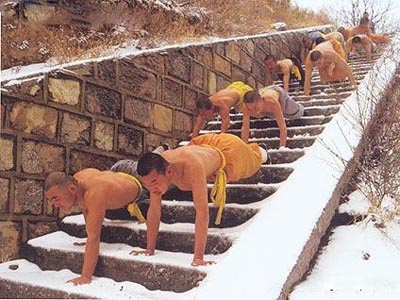
The monks at the Shaolin temple are no strangers to pain, either. They just smash metal against their head and bend it. They break some metal. These monks will also impale themselves on four spears, which is really painful. One of the craziest training methods comes at a secretive silat compound in Malaysia. Only a few ever Westerners have pit themselves against the extreme rituals. They pick up thing that weighs like five pounds, then take this thing and smash it into their training partner. This isn’t in a six-minute abs video. It’s a serious pounding to the ribcage. It’s like getting bear-hugged by cement. It gets worse. How about pitting the most vulnerable area of your body, your throat, against a steel bar. Now that hurts.
Jumping Through a Ring of Fire
Each of these crazy exercises is designed to toughen your body, and to prepare your minds for the rigors of combat. Like rubbing yourself with boiling coconut oil. If it’s too hot, if you’re not confident, don’t do it. Just focus and get the heat in the face. Tap a little bit. Keep tapping.
While the boiling oil might hurt, it is unlikely to kill. The same can’t be said for the ultimate test. You have to overcome your fears and hurl your body through a ring of fire. Coming over here and jumping through a literal ring of fire is really intimidating. You look at that thing, it’s on fire. You think, “am I gonna burn myself to death?” A single misstep could leave you severely burned.
“Holy crap. It’s not testing yourself against another man, it’s testing yourself against your own inner fears. That’s what life’s really about.”
Page 1 of 1:





